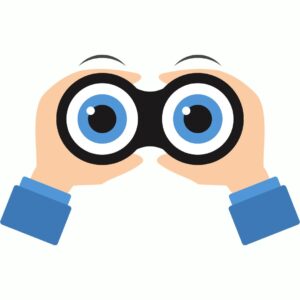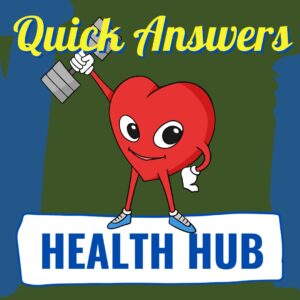Deep within the intricacies of our circulatory system lies an essential mechanism that prevents excessive bleeding when we get injured – blood clotting. While these clots can be lifesavers in many situations, they can also pose a severe health threat when they form unexpectedly or in unwanted locations. Recognizing the early signs and understanding the underlying factors that contribute to the formation of these potentially dangerous blockages can be pivotal in preventing serious health complications. Lets shed light on the nuances of blood clots, empowering you with the knowledge to identify potential threats and take timely action.
Understanding Blood Clotting: A Natural Mechanism
Blood clotting is an essential biological process that safeguards our body from excessive bleeding during injuries. When a blood vessel is damaged, platelets—tiny, disc-shaped cells in the blood—spring into action, attaching to the injury site. At the same time, a series of chemical reactions activate fibrin strands, which weave together to form a clot and seals the wound.
Causes of Unwanted Blood Clots
There are many reasons for unwanted blood clots. Sitting or being stationary for long periods of time can cause unwanted blood clots. Certain medications like estrogen, testosterorne, cortisone, and some antidepressants have caused unwanted blood clots. You may have a genetic predispositions or a medical conditions like atrial fibrillation which can cause clotting. Recent studies have also observed an association between even minor COVID-19 infections and an increased risk of clotting. Additionally, there have been cases of blood clotting associated with some mRNA COVID-19 vaccines.
 Symptoms and Signs to Watch Out For
Symptoms and Signs to Watch Out For
Symptoms of blood clots can vary significantly based on their location in the body, making early detection essential to preventing severe complications. In the case of deep vein thrombosis (DVT), which occurs typically in the legs, symptoms can include sudden muscle spasms and cramps in the calf accompanied by fatigue. The area of the clot may include localized pain, swelling, redness, and a warm sensation.
Suppose a clot travels to the lungs, leading to a pulmonary embolism. In that case, one might experience excessive fatigue, shortness of breath, intermittent, sharp chest pain, rapid heart rate, and, as it progresses, coughing up blood.
Clots that form in the arteries of the brain can cause a stroke with sudden numbness or weakness on one side of the body, confusion, trouble speaking, visual disturbances, and dizziness.
Recognizing and promptly addressing these symptoms can be life-saving, as untreated blood clots can lead to long-term complications or be fatal. You may need to take a more aggressive role in your health care. Let’s look at some Western Medical tests that can help identify blood clots.
Key Tests to Identify Blood Clots
- D-dimer Blood Test:
-
- Description: A D-dimer test measures the presence of D-dimer, a small protein fragment present in the blood after a clot dissolves. Elevated levels might indicate an active clot.
- Usage: Often used as an initial screening tool, especially if someone is suspected of having a deep vein thrombosis (DVT) or pulmonary embolism (PE). However, it’s non-specific; many conditions can elevate D-dimer levels, so further imaging is usually required for confirmation.
- Ultrasound (Doppler Ultrasound)
-
- Description: This non-invasive test uses sound waves to create pictures of blood flowing through the arteries and veins.
- Usage: Commonly used to detect blood clots in the legs (DVT). It can identify blockages or clots in the veins and evaluate their size and location.
- Computed Tomography (CT) Scan
-
- Description: A CT scan combines a series of X-ray images taken from different angles and uses computer processing to create cross-sectional images of bones, blood vessels, and soft tissues.
- Usage: Typically used to detect clots in the lungs (pulmonary embolisms) or in the brain. A contrast dye is often injected into a blood vessel to highlight the vascular structure in the images.
- Magnetic Resonance Imaging (MRI)
-
- Description: MRI uses a powerful magnetic field, radio frequency pulses, and a computer to produce detailed pictures of internal body structures.
- Usage: Useful for visualizing blood clots in the veins, particularly in the pelvis or brain. It offers detailed imagery, which can be beneficial for diagnosing clots in more challenging anatomical locations.
- Venography
-
- Description: An imaging test that uses X-rays to examine blood flow through the veins, especially the legs.
- Usage: A contrast dye is injected into the patient’s foot vein, and X-ray images are taken of the leg. This test can show whether blood flow is slow in the vein, which might suggest a clot. However, venography is now less commonly used due to the non-invasive nature of ultrasounds and MRIs.
These diagnostic tools, combined with clinical evaluation and a patient’s medical history, allow healthcare professionals to accurately detect and assess the extent and location of blood clots.
Blood Clot Prevention: A Multifaceted Approach
When thinking about blood clot prevention, several strategies might be beneficial. Regular exercise and staying active could potentially aid in maintaining smooth blood flow, which might reduce the likelihood of clot formation. If you travel, especially on longer flights, you might want to look into compression stockings, which are believed to encourage leg circulation. Drinking enough water and maintaining a balanced diet with foods like leafy greens could support blood health. It might also be a good idea to schedule regular medical check-ups and blood tests to monitor any potential clotting factors. For those who smoke, contemplating reducing or quitting might be a significant step, given that smoking adversely affects blood vessels. Exploring these strategies could offer a holistic approach to possibly reducing the risk of blood clots.
If you’ve been exposed to COVID-19 or the mRNA vaccines and want to incorporate holistic approaches for prevention, check out my members only area, HealthHUB, for the options I’m using in clinic, along with doses and brands in, “Natural Remedies for Better Circulation & Stop Blood Clotting.”
Together, these strategies form a robust defense against the potential threats posed by unwanted blood clots.
 What Does This All Mean?
What Does This All Mean?
Blood clotting safeguards against excessive bleeding during injuries. Yet, when clots unexpectedly develop in unwanted areas, they present substantial health threats. Early symptom recognition is crucial for proactive health management. Better than identifying the clot after it forms, prevention can be more impactful than detection, helping ensure a healthy, clot-free life. For additional holistic strategies, especially relevant to those exposed to COVID-19 or mRNA vaccines, join HealthHUB and learn what you can do to combat brain fog, fatigue, digestive issues, lichen planus and more!

